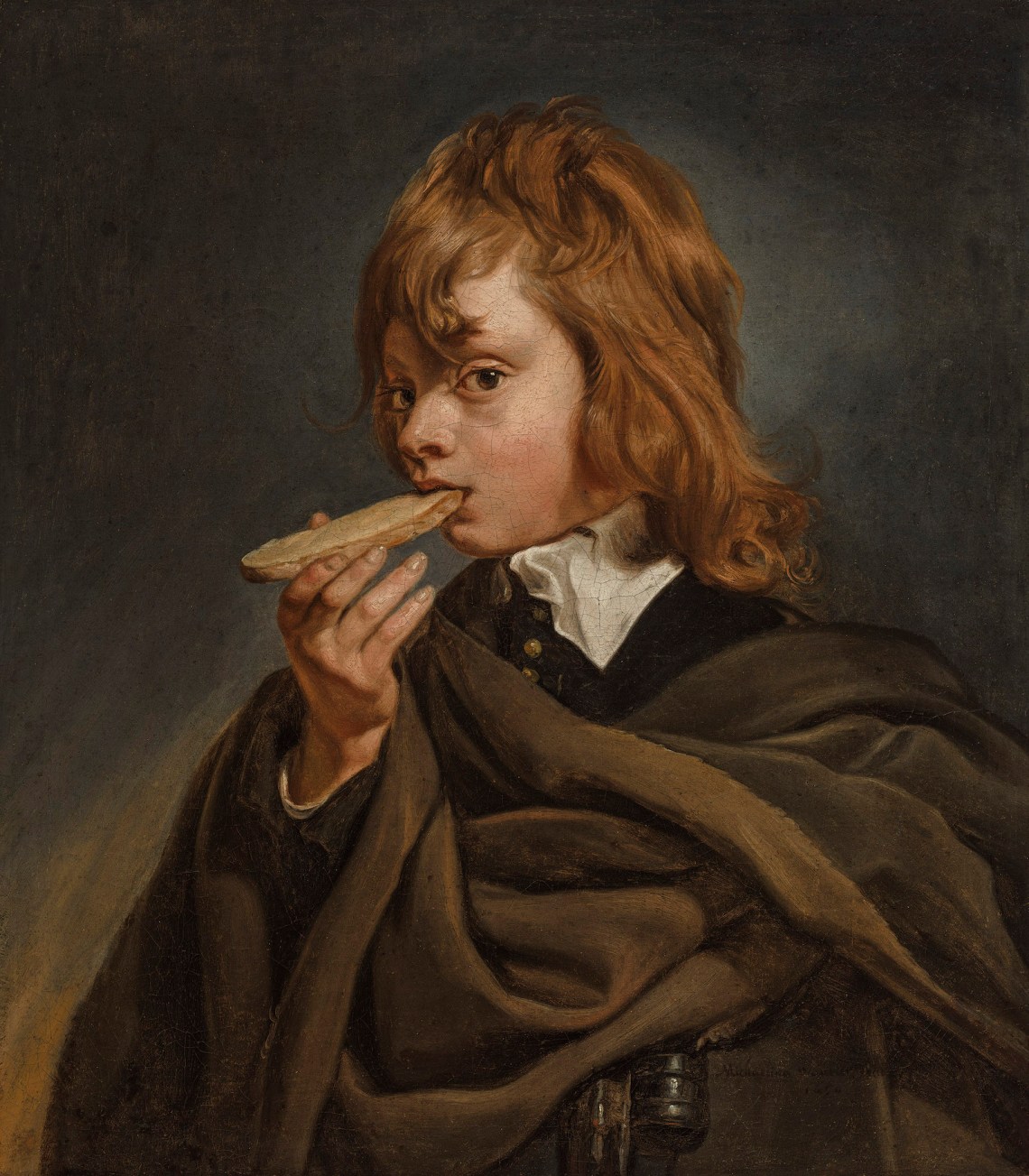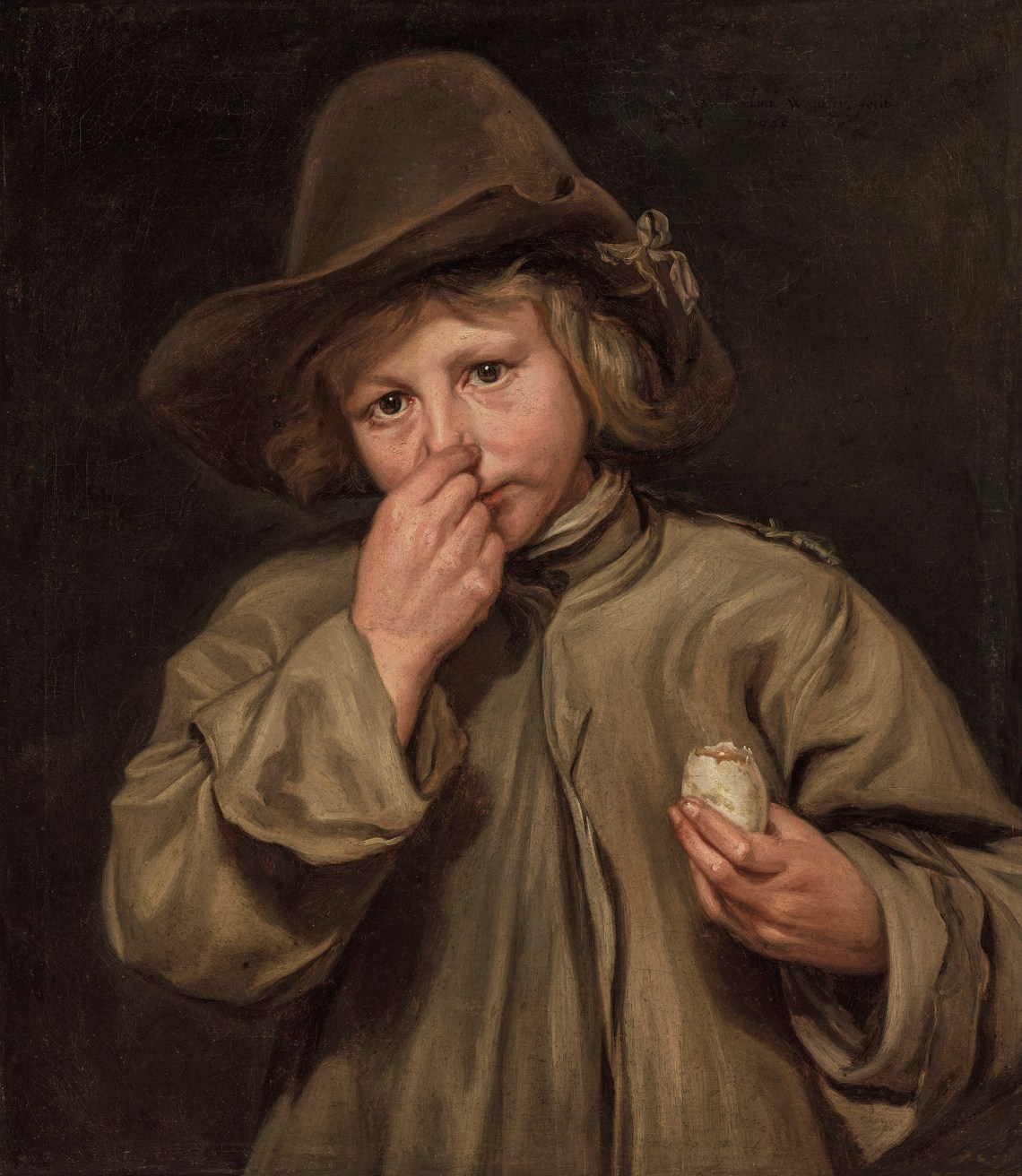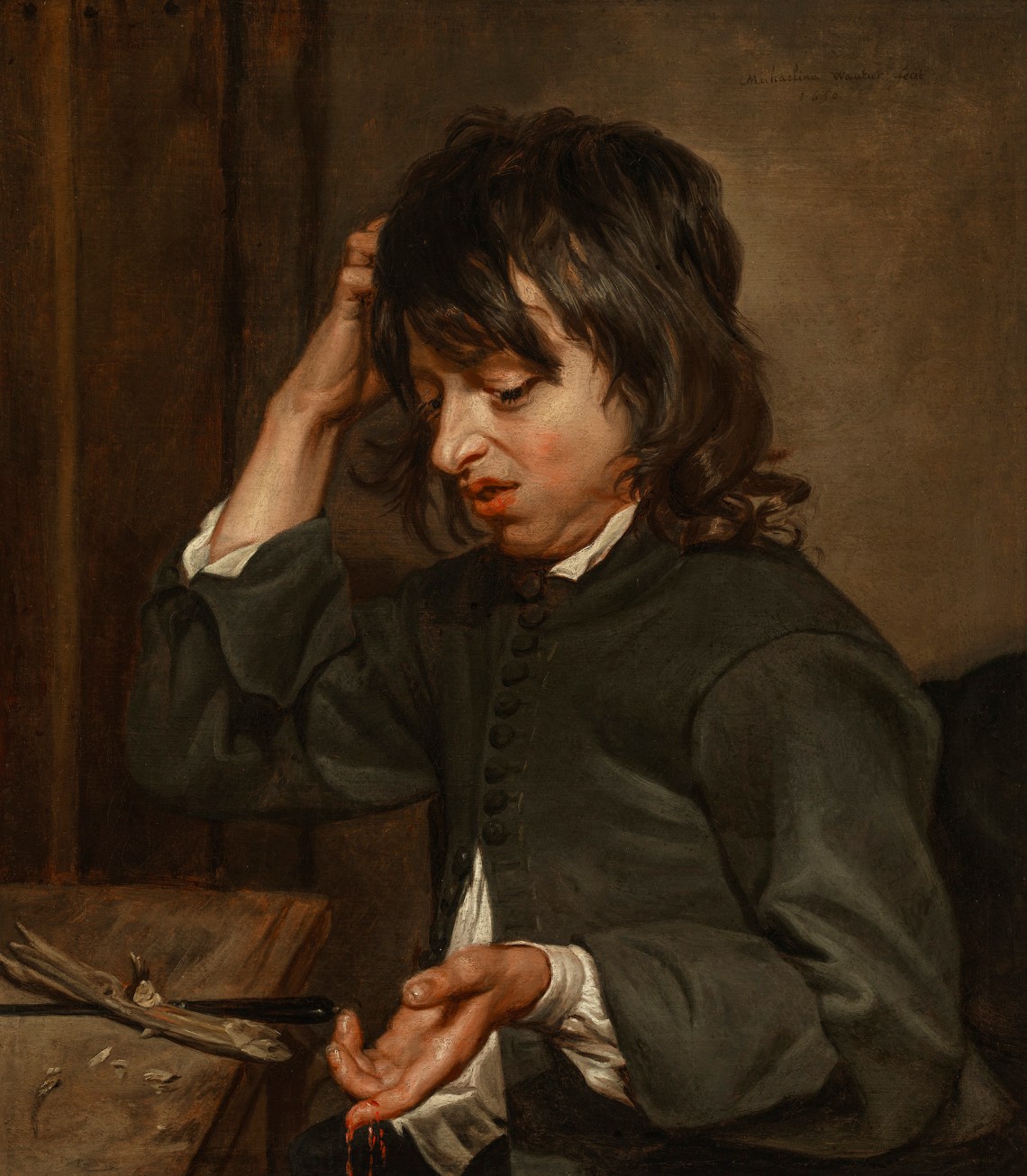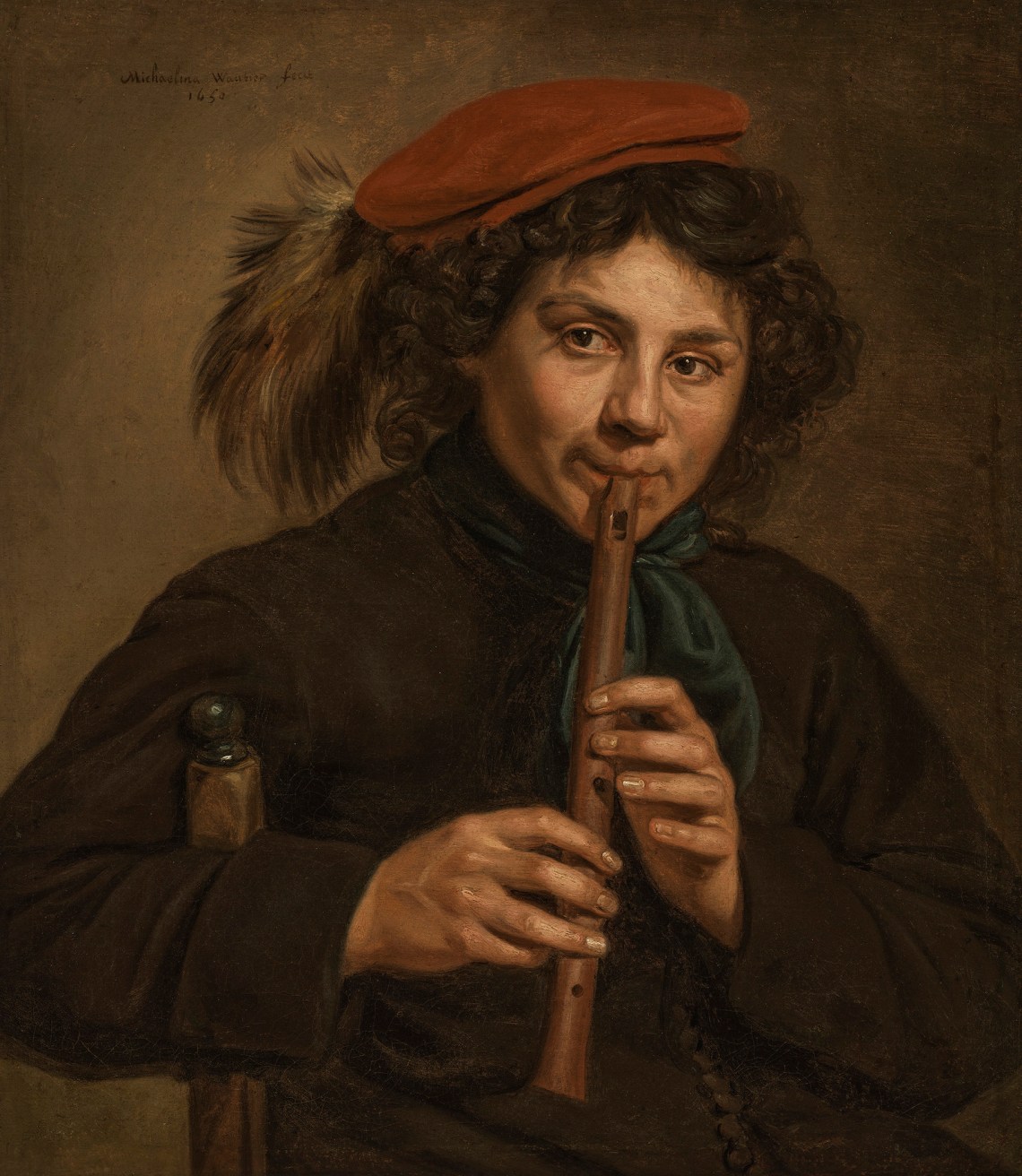“The Five Senses” is a quintet of portraits made in 1650 by the Flemish painter Michaelina Wautier, who was all but unknown until the 1990s, when a Belgian curator went looking for a Van Dyck in the basement of the Kunsthistorisches Museum in Vienna and found Wautier’s Triumph of Bacchus (ca. 1650) instead. Two years ago Wautier’s most appealing paintings—five boys, no more than ten years old, fidgeting in their frames—went up for auction. Now Sight, Hearing, Smell, Taste, and Touch are anchoring a small, unprecedented Wautier exhibit at the Museum of Fine Arts in Boston. In 2021 the MFA launched the Center for Netherlandish Art, a rare threat to the Met, which since the late nineteenth century has held the best Golden Age collection in the United States. Wautier’s show is part of an important step toward toppling a hierarchy of northeastern enthusiasts of the northern baroque that has long hewed to one of Bruegel’s Netherlandish Proverbs: New Yorkers shear sheep, Bostonians shear pigs.
Women painters of the northern baroque are poorly represented in American museums. And so little has been known about Wautier that the curator Jeffrey Muller and his research team of six art historians in training had few precedents for their show and its trim online catalog. On the MFA’s second floor, past the major-league Rembrandts and Halses of the permanent collection, they have stuck the boys in a dugout of sorts. There is a wall large enough for them to hang in a row, as they were probably meant to. To their right is Wautier’s self-portrait (ca. 1645), and on the wall opposite some historicist ephemera—a timeline, a technicolor map of Brussels. But the boys aren’t distracted, so neither are we.
Four of them endear us into thinking they are all in the room that is worth looking at, then prove it with their bewitching aloofness. Hearing, nestled like his brothers in mildewy earth tones, prepares to play a note on his recorder, his nimble fingers frozen by streaks of white. Smell plugs his nose to avoid the stench of the rotten egg he is holding, staving off the tears that would surely run down his cheeks if he caught a whiff. Taste has a helmet of red hair. Curls made of brushstrokes just slightly thicker than the cracks in the canvas bob against his rosy cheek, white collar, and dark brown shirt. In their unfurling just-aboutness, they mimic the lightness with which he tastes his buttered bread. And while buttoned-up Touch has just drawn blood from his forefinger, he scratches his head in puzzlement, as if the pain has abated or not even started. Wautier catches the four on the precipice of puberty or life itself, which in these paintings is identified completely with sensory experience.
Something different is happening to Sight. Perhaps slightly older, he is the only one who is looking directly toward his sensory catalyst: his glasses, which he holds in his right hand to examine his left. For the others, the recorder, bread, egg, and knife may as well be part of separate still lifes. There are four possible centers of Sight: his glasses, each of his hands, and his eyes. The spiral of brown formed by his garment leads the viewer’s eye toward his right hand and back out again. His shimmering blond eyelashes cover just enough of his pupils that we cannot tell whether he is looking studiously or daydreaming, but what is certain is that he has no interest in us.
Wautier is generous to tour us through the faculties, and to make brushstrokes like ribbons that weave the five boys into a sensory Gesamtkunstwerk. (See Smell, whose hat, hair, scarf, and handsome taupe coat are braided in color and form.) But Sight is her arrival at the supreme sense. We see him at the front of the pack, then double back after looking at Hearing, Smell, Taste, and Touch. Why force those four squeamish boys to pose, then? Or why not give them all glasses? Together the paintings suggest that we only know the glory of sight by a comparative exploration of the other senses; if we only looked at looking we would cancel ourselves out.
Northern baroque painters diverged from Renaissance iconography with what the art historian and critic Svetlana Alpers called their “art of describing.” Where Italy had a textual culture and an art to interpret it, the Dutch Republic, along with “the northern tradition of which it is part,” had a visual culture and an art to picture it. “What matters in Dutch art,” as Ernst Gombrich summarized Alpers’s argument in these pages forty years ago, “is precisely what meets the eye.” With that revolutionary distinction, she has given American museumgoers—who come to halls of Dutch and Flemish painting from a culture more like Italy’s—permission to look, rather than to read. “We are always looking at the art,” she once said, disguising her sound advice as a declaration. “And then you just find what would help you do that. What words?”
Advertisement
Wautier was born in 1614 in Mons, near the French border of the Catholic Southern Netherlands, which was then part of Habsburg Spain. Like many during the Eighty Years’ War, she was driven north, to Brussels, where at twenty-nine she took up the brush—perhaps not for the first time—and established a studio with her brother, Charles, both of them unmarried. The few details we have of her biography and artmaking have invited comparisons to Rubens, whose studio in Antwerp set the standard for portrait painters of the day. But in the catalog Muller rightly decries attempts to “pigeonhole Wautier as the exponent of one or another older master or artistic tradition.” Perseverating on how to rank a rediscovered Netherlandish artist is perhaps the surest way to forget her again. What matters is that Wautier shares her better-known peers’ vision of vision itself, and shows it in a way all her own. It’s a pleasure to see and know her, in that order.







